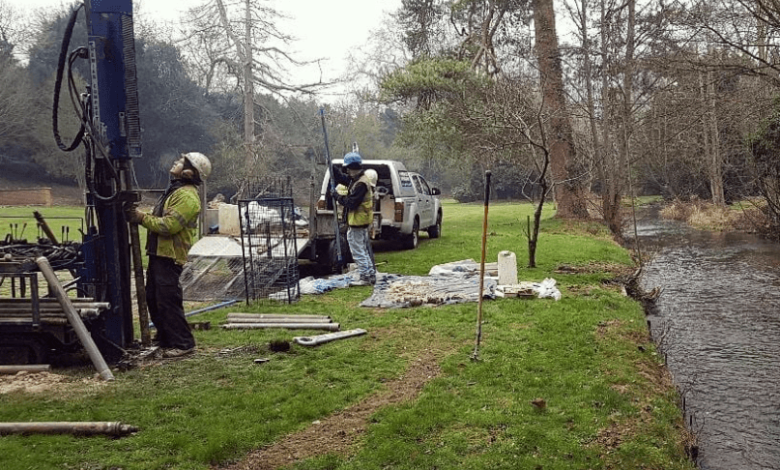Geotextil Impermeable: Reinventing Groundwater Control and Structural Protection

The demand for sustainable and effective infrastructure materials has led to the growing use of geosynthetics in civil engineering. Among them, geotextil para impermeabilizar has become a cornerstone in projects where water control and soil protection are essential. These impermeable geotextiles play an often invisible yet vital role in the long-term stability of many modern construction efforts. Whether it’s landfill liners, water reservoirs, or chemical containment zones, geotextil para impermeabilizar ensures that fluids are kept in—or out—depending on the design needs.
Defining Geotextil Impermeable
Geotextil para impermeabilizar refers to a specific type of synthetic fabric engineered to resist the flow of water or other liquids. Unlike traditional geotextiles that allow fluid passage for filtration or drainage, this impermeable variant is designed to block all seepage. It is typically made from high-density materials like polypropylene or polyethylene and is either chemically treated or coated to enhance waterproofing capabilities.
The structure may vary: woven, non-woven, or laminated. What sets it apart is the complete lack of permeability, which is why it’s ideal for environmental protection, leak-proof barriers, and containment applications.
Key Properties
To understand the importance of geotextil impermeable, one must look at its technical strengths:
- High impermeability: Prevents any water infiltration under pressure or gravitational flow.
- UV and chemical resistance: Endures harsh environments and corrosive substances.
- Mechanical strength: Maintains structural integrity under heavy load or shifting soil.
- Flexibility and ease of installation: Adapts to uneven terrains and is simple to deploy.
- Compatibility with other geosynthetics: Often used in multilayered systems with geomembranes or drainage nets.
See also: Business Consulting Services for Strategic Growth
Main Uses
The use of impermeable geotextiles has expanded rapidly across various sectors:
1. Waste Management and Landfills
In sanitary landfills, geotextil para impermeabilizar lines the bottom and covers the top to trap leachate and prevent toxic substances from entering groundwater. It also aids in odor control and gas containment when used alongside gas collection systems.
2. Water Storage and Irrigation
Reservoirs, ponds, and canals need reliable liners to reduce seepage loss. Geotextil para impermeabilizar ensures that water remains within the designated area, making water delivery more efficient in agricultural or urban systems.
3. Tunnel and Subway Construction
Underground structures face serious risks from groundwater intrusion. Using geotextil para impermeabilizar around the exterior of tunnels or basements acts as a defensive layer, preserving structural durability and user safety.
4. Mining and Industrial Containment
Mining facilities often handle highly toxic slurry or chemicals. Impermeable geotextiles line storage ponds and containment cells to prevent environmental contamination.
5. Road Infrastructure in Wet Areas
Subgrade layers beneath roads or highways in flood-prone zones can be protected with geotextil para impermeabilizar to avoid saturation and erosion, thereby extending the lifespan of pavement structures.
Construction Advantages
The choice of geotextil para impermeabilizar over traditional materials like clay or concrete offers numerous advantages:
- Cost-Effectiveness: Lower installation and transportation costs.
- Faster Deployment: No curing time is required, unlike concrete linings.
- Better Adaptability: Easily fits uneven or irregular ground shapes.
- Low Maintenance: Long lifespan with minimal need for repair or replacement.
- Environmental Safety: Prevents leakage that may harm local ecosystems or water sources.
Selection Criteria
Not all impermeable geotextiles are created equal. Choosing the right one depends on:
- Thickness and Density: For high-pressure applications, thicker fabrics are preferable.
- Chemical Compatibility: Depending on the fluid it’s meant to contain, the material must resist corrosion or chemical breakdown.
- UV Protection: In exposed installations, UV resistance is crucial to prevent degradation.
- Tensile Strength: Ensures the fabric holds up against movement or external forces.
Consulting with a geotechnical engineer is essential for proper selection and specification.
Installation Methods
Site Preparation
Before laying the geotextil impermeable, the site must be cleared of sharp debris, compacted, and leveled to avoid puncture or misalignment.
Deployment and Seaming
The fabric is typically unrolled in large sheets. Overlapping sections are either heat-welded or sealed using specialized adhesives to form a continuous, leak-proof barrier.
Protective Layers
To enhance its lifespan, the fabric is often sandwiched between layers of soil, sand, or other protective materials. In some cases, a geonet or drainage composite is added on top to prevent hydrostatic buildup.
Sustainability Impact
In today’s world of environmental accountability, geotextil para impermeabilizar supports eco-conscious engineering. It minimizes groundwater pollution and ensures proper fluid management without the heavy carbon footprint of concrete or metal systems.
In agricultural applications, it conserves water. In waste containment, it protects aquifers. In construction, it reduces material usage. These benefits align with green building certifications and sustainability targets.
Common Myths
“It’s Just Plastic Fabric”
Though synthetic, geotextil para impermeabilizar is a high-performance engineered solution—not merely plastic sheeting. It’s tested for load, fluid resistance, and environmental exposure.
“It Cracks in Cold Weather”
Modern geotextiles are designed for wide temperature ranges, including sub-zero climates. Their flexibility and polymer makeup prevent cracking or tearing in winter conditions.
“Installation Is Complicated”
In reality, it’s faster and more straightforward than many traditional waterproofing methods, often completed in hours rather than days.
Future Trends
As the demand for smart infrastructure grows, researchers are developing intelligent geotextil para impermeabilizar materials embedded with sensors. These will detect pressure changes, leaks, or structural weaknesses, adding a new layer of monitoring and automation.
Additionally, recycled geotextiles and biodegradable options for temporary installations are also under development, further aligning the industry with sustainability goals.
Conclusion
The invisible work of geotextil para impermeabilizar often goes unnoticed, yet its importance in securing our environment, infrastructure, and resources cannot be overstated. Whether it’s preventing chemical leaks, conserving water, or strengthening structural foundations, this material is shaping the future of responsible engineering.
As more industries adopt innovative solutions to face modern environmental and construction challenges, geotextil para impermeabilizar will remain a key tool in achieving safety, sustainability, and structural integrity.




